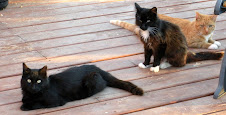To get started with NetLibrary I searched for the classic author John Steinbeck. After browsing the first page of the 279 items found, I discovered an interesting title, Americans View Their Dust Bowl Experience. I then was able to search the content and go directly to pages where my search term appeared – very cool. Some info was bibliographic and some discussed The Grapes of Wrath. It was easy to navigate within the eBook and the Knowledge Tools would be helpful for all kinds of student projects. I can see both students and teachers using this for background information and research, but it's definitely not a first choice for pleasure reading!
Constitution Day is here and they needed materials yesterday is the more likely scenario! So, oops, just noticed that I went back to Basic Search but never closed out of my first title. OK, in English students may want to try a few of the 2,635 items located. How about Our Elusive Constitution: Silences, Paradoxes, Priorities or The Illustrated Dictionary of Constitutional Concepts? Found a few things in Spanish and French too.
Entering Oklahoma in the Advanced Search under subject, publication year 2000, language English and format eBooks resulted in zip. So, leaving publication year blank I tried again. The 82 items that came up were a nice mix of biography, travel, Native American, history, etc. A Boyhood in the Dust Bowl, 1926-1934 would tie in with my earlier search for Steinbeck and The Grapes of Wrath. First chapter is intriguing… "Not the Worst of Times." This resource adds a wealth of research possibilities to any library collection!






